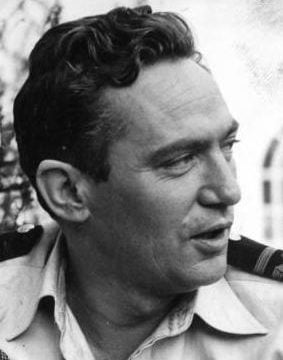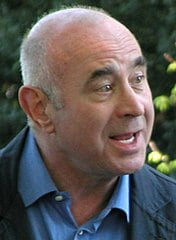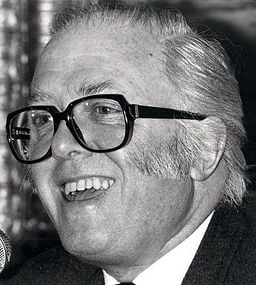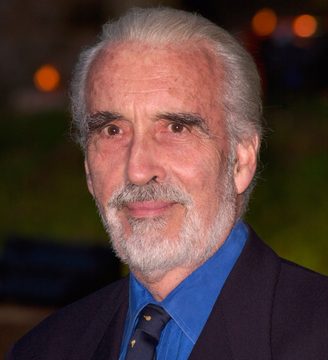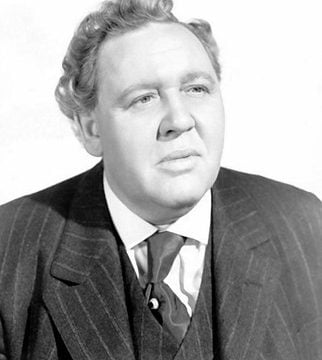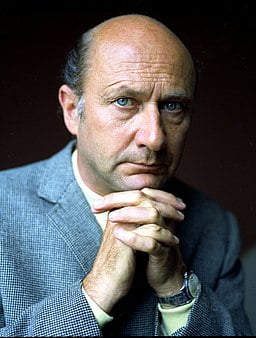Early Life and Career
Peter (Wilton) Cushing was born on 26 May 1913 in Kenley, Surrey. He was the second son of Nellie and George Cushing, a quantity surveyor. During the First World War, the family lived in Dulwich but moved to Purley in Croydon after the war ended in 1918. Cushing was taken with acting from an early age, heavily influenced by his paternal grandfather, an aunt, and an uncle, who were all actors. He received his early educated in Dulwich, and later, at Purley County Grammar School. While Cushing excelled in the Arts and sports, he was an otherwise poor student.
He wanted to join the acting profession immediately after leaving school but his father was against the idea. Thus, Cushing ended up taking a job as a surveyor’s assistant with the local council. However, he kept up his interest in acting by joining a local amateur theatre group. After several failed attempts, he eventually won a scholarship at the Guildhall School of Music and Drama in London. In 1935, he took up a position working at the Connaught Theatre in Worthing. The following year, he landed an assistant stage manager’s job at the Southampton Rep, where he stayed for 3 years.
World War II
In 1939, Cushing decided to head for Hollywood. He just happened to be in the right place at the right time when he landed a walk-on part in The Man in the Iron Mask (1939), his film debut. Cushing managed to secure another half-dozen feature film bit-parts before he returned to the UK in 1941. This included a brief appearance in the Laurel and Hardy film A Chump at Oxford (1940). He also squeezed in his Broadway debut in the Seventh Trumpet (1941) before heading back home.
After his arrival back in the UK, Cushing was deemed unfit for active military service. He decided that he would contribute to the war effort by joining the Entertainment National Services Association (ENSA). However, a reoccurring lung condition meant he was forced to quit the organisation before the war ended.
Post War
After the war, Cushing had modest success on the London stage. Nonetheless, he was given a big break when famed actor and director Laurence Olivier cast him in a film production of Hamlet (1948). It was on the set of his first British film, that he met Christopher Lee. The novice actor became Cushing’s future on-screen horror partner and a lifelong friend. Meanwhile, Hamlet went on to win the Oscar for Best Picture, earning Cushing critical appraisal for his performance. After the success of Hamlet, Cushing accepted a personal invitation from Olivier to join his repertory theatre company, The Old Vic. The commitment saw him embark on a one-year tour of Australasia.
After returning to the UK, Cushing struggled to find decent work, only managing to appear in minor radio and theatre roles. However, he returned to feature films when he appeared in John Huston’s Moulin Rouge (1952). He then played the role of Mr. Darcy in the BBC’s television adaptation of Jane Austen’s Pride and Prejudice (1952) to much acclaim. Following this success, Cushing became a familiar face on British television.
Film Career
In 1957, Cushing was cast in the titular role in Hammer’s first colour horror film The Curse of Frankenstein. Cushing had found his genre. He quickly went on to play Dr. Van Helsing in Dracula (1958), and then Sherlock Holmes in The Hound of the Baskervilles (1959). He portrayed both characters a good number of times, as well as other horror roles, in the 20 years that followed.
He took on another iconic role in the 1960s when he appeared in the title role in the two Dr. Who feature films. The films, based on the BBC’s cult television series, were released in 1965 and 1966. However, it was the horror genre that continued to monopolise Cushing’s career. His best-known on-screen appearance outside of the horror genre was almost certainly in Star Wars (1977). In the film, he played Grand Moff Tarkin in the original installment of George Lucas’ mega-successful science-fiction film series.
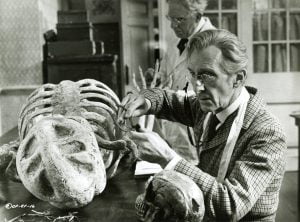
Peter Cushing in the Creeping Flesh (1973). Image credit: Creative Commons (CC by 2.0)
Career Summary
During the 1970s, Cushing’s career slowed a little but he still made a further 36 films throughout the decade. On ten of those occasions, he teamed up with Christopher Lee, which brought their on-screen pairing to twenty-three. The comedy horror film House of the Long Shadows (1983), was Cushing’s and Lee’s twenty-fourth joint outing. It would also prove to be their final film together. After that, Cushing made just three more films, i.e. the comedy Top Secret! (1984), the fantasy film Sword of the Valiant (1984), and the adventure film Biggles: Adventures in Time (1986).
In all, Cushing appeared in more than 100 feature films throughout his 47-year career. In addition, he made seventeen TV films and three short films. His ultimate role was that of Sherlock Holmes in the TV film The Masks of Death (1984).
Personal Life
Cushing met his future wife Violet “Helen” Beck in 1942, during his tour of the British Isles with ENSA. The former dancer was a lead female star of the touring show. They married on 10 April 1943. The devoted couple remained married for 28 years, which ended with Helen’s death in 1971. After his wife died, Cushing became more introverted and worked somewhat less as a result.
After retiring in 1984, Cushing made relatively few television appearances. However, he keenly pursued his hobbies, which included bird watching and painting. He was also a model soldier enthusiast and had a collection of over 5,000. Ironically, Cushing, often cast as a bloodlust character, was in fact an ardent vegetarian.
He authored two autobiographies in his retirement, Peter Cushing: An Autobiography (1986) and Past Forgetting: Memoirs of the Hammer Years’ (1988). He also wrote a children’s book titled ‘The Bois Saga’ (1994).
In 1989, he was awarded an Order of the British Empire (OBE) in recognition of his services in acting.
Ill-health and Death
In 1981, Cushing was diagnosed with prostate cancer. He went on to live more than another 12 years without treatment, though his health gradually declined. He died as a result of the disease on 11 August 1994, aged 81, at the Pilgrims Hospice in Canterbury.
In accordance with Cushing’s wishes, his funeral was a low-key affair with only family and close friends attending. Nonetheless, hundreds of fans and well-wishers made their way to Canterbury to pay their respects. In January 1995, a memorial service was held for Cushing at The Actor’s Church in Covent Garden,
In 2008, Cushing’s image was used on a set of stamps issued by Royal Mail. The stamps were published to celebrate the fiftieth anniversary of the release of Hammer’s Dracula. In 2013, Cushing was himself was honoured by Royal Mail when they chose him as one of ten “Great Britons” for a commemorative stamp issue.
